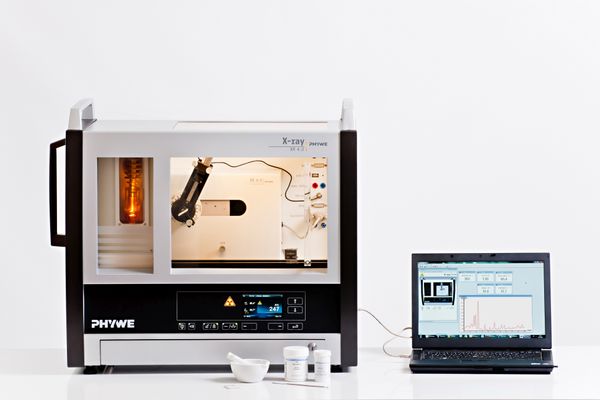setTimeout(function(){
window.print();
},500)

Technical data Debye-Scherrer diffraction patterns of powder samples with a hexagonal lattice structureArticle no: P2542305  Principle A polycrystalline powder sample of zinc is irradiated with the radiation from a X-ray tube with a copper anode. A Geiger-Mueller counter tube is automatically swivelled to detect the radiation that is constructively reflected from the various lattice planes of the crystallites. The Debye-Scherrer pattern is automatically recorded. The evaluation of the pattern not only allows the Bragg reflexes to be assigned to the individual lattice planes and so also the corresponding Bravais lattice type to be obtained, but in addition results in values for their spacing as well as for the lattice constants of zinc and the number of atoms in the unit cell. Tasks
Learning objectives
Scope of delivery
| ||||||||||||||||||
PHYWE Systeme GmbH & Co. KG
Robert-Bosch-Breite 10 – 37079 Göttingen – Germany
www.phywe.com
Robert-Bosch-Breite 10 – 37079 Göttingen – Germany
www.phywe.com

